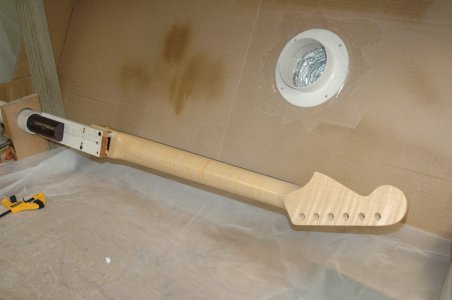audiophilosophy
Newbie
- Messages
- 2
If anyone can provide me with some info, it would be greatly appreciated. I got an unfinished Warmoth body made with an Indian Rosewood top. I understand that rosewood has natural oils, and as a result, does not necessarily require a finish. However rosewood can also dry out and even crack if it is neglected for many years without being conditioned. Since I don't want to bother with frequent maintenance of the rosewood by applying conditioner/oil/moisturizer to it every so often, I just want to finish it now that it's brand new so that it will be permanently protected, not get damaged from drying out or whatever, and basically last a lifetime without me having to do maintenance ever.
I know that if I were dealing with a non-oily wood as opposed to rosewood, it would be easy to achieve my goal by simply applying a polyurethane finish. However, I've read that since rosewood is oily, it does not work too well with poly finishes (maybe just the oil-based poly finishes??).
Anyway, if anyone could advise me on what to use, I'd appreciate the advice. Aesthetics are not that big of a deal to me as protection and durability, but if possible I'd like to go the route of satin/low-gloss. If I can get away with just rubbing some naphtha or acetone on the rosewood and then quickly applying a water-based poly finish that would be great. I'd like to know before I get started so that I wont have to sand it down and start all over with "plan b".
I know that if I were dealing with a non-oily wood as opposed to rosewood, it would be easy to achieve my goal by simply applying a polyurethane finish. However, I've read that since rosewood is oily, it does not work too well with poly finishes (maybe just the oil-based poly finishes??).
Anyway, if anyone could advise me on what to use, I'd appreciate the advice. Aesthetics are not that big of a deal to me as protection and durability, but if possible I'd like to go the route of satin/low-gloss. If I can get away with just rubbing some naphtha or acetone on the rosewood and then quickly applying a water-based poly finish that would be great. I'd like to know before I get started so that I wont have to sand it down and start all over with "plan b".




